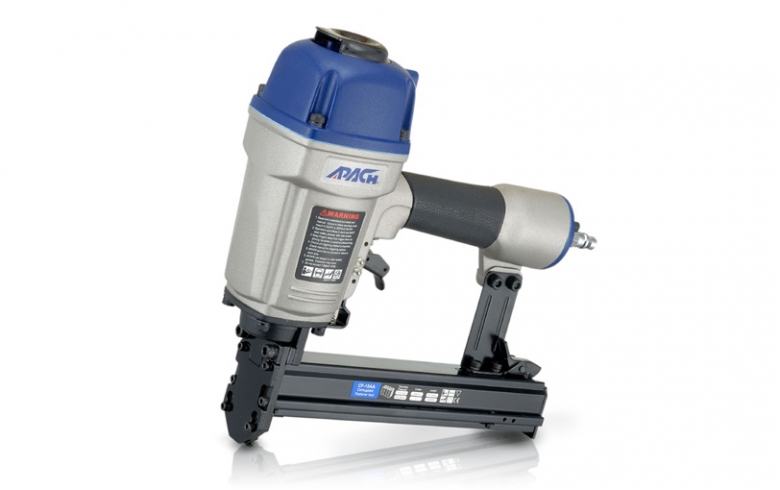Apach is the well-known manufacturer of nailer guns. Exquisitely designs each of its nailer guns, and insists on strict durability testing of every piece of key components and parts, as well as rigid pre-delivery inspections of finished products. Our products are durable and can be used under harsh working environments. Therefore, Apach’s products are highly recognized and sought-after by professionals worldwide. Today, Apach is already a globally known brand.
APACH offers a complete product line to solve customers’ problems, including coil nailers, framing nailers, finish nailers, staplers, carton closing tools and so forth. These tools are ideal for use in construction, pre-fabricated housing, pallets, furniture, upholstery, fencing and carton closing.
In this article, we are going to introduce one of popular products that manufactured by Apach – CF-15AA Corrugated Fastener Tool.
CF-15AA Corrugated Fastener Tool

This Apach CF-15AA Corrugated Fastener Tool is designed to be powerful, safely and comfortable to use. Our Corrugated Fastener Tool work great for joining door stiles and cabinet faces and can be used to quickly assemble window frames as well. It is also good at upholstery, building, bedding and other applications.
Features:
Bottom Load Magazine
Easy Magazine Adjustment
Jam-Free Magazine
Powerful
Fasteners:
Compatible with Bea W, Duo-Fast CF, Haubold WN, Senco SC2, Omer CF Series
Applications:
Framing, Joiner
Upholstery, Furniture, Bedding
Door, Window, Trimming, Picture Frames, Building Components
Cabinets, Furniture, Light wood assembly
Industrial, Pre-Fabricated Housing
If you need more information about Corrugated Fastener Tool, welcome to visit the website of Apach to learn further details and feel free to contact with us.
Apach continues to launch new products to meet customers’ special requirements, pays close attention to each customer’s opinions, and provides speedy, timely services to clients. This globally prestigious brand is trustworthy.
176 Industrial 9th Rd, Tali Dist., Taichung City, Taiwan 41280
TEL: +886 -4-24915576
FAX: +886- 4-24915580
E-mail: info@apach.com.tw
